Atmospheric pressure affects your everyday life whether you are aware of it or not. Weather patterns and forecasts around the world are affected by atmospheric pressure, but many don’t actually know what it actually is. And once you’ve learned the basics of atmospheric pressure, you can better understand how to measure it. Keep reading to learn more.
What is Atmospheric Pressure?
Essentially, atmospheric pressure is the force exerted at any given point on the Earth’s surface by the weight of the air above that point. In short: the air that surrounds the Earth creates atmospheric pressure and this pressure is determined by the collective weight of air molecules. Air molecules at higher altitudes have fewer molecules pressing down on them from above and therefore experience lower pressure, while lower molecules have more force or pressure exerted on them by molecules piled on top of them and are more tightly packed together.
When you go up into the mountains or fly high in an airplane, the air is thinner and the pressure is lower. The air pressure at sea level at a temperature of 59°F (15°C) is equal to one atmosphere (Atm), and this is the baseline reading for determining relative pressure.
Atmospheric pressure is also known as barometric pressure because it is measured using a barometer. A rising barometer indicates increasing atmospheric pressure and a falling barometer indicates decreasing atmospheric pressure.
How Is Barometric Pressure Measured?
The standard unit for measuring barometric pressure is called an atmosphere (atm). In relation to the English system of measurement, one atmosphere (atm) equals 29.9213 inches of mercury (inHg). In both millibars (mb) and hectopascal (hPa), the standard pressure at sea level is 1013.25 mb or hPa. Other conversions include:
- 1 atm = 101,325 pascals (Pa)
- 1 atm = 1,013.25 hectopascals (hPa)
- 1 atm = 760 millimeters of mercury (mmHg)
- 1 atm = 1,013.25 millibars (mbar)
What Causes Changes in Atmospheric Pressure?
Changes in air pressure are caused by differences in air temperature above the earth, and the temperature of an air mass is determined by its location. For example, air masses above oceans are typically cooler than air masses above continents. Air temperature differences create wind and cause pressure systems to develop. The wind moves pressure systems and these systems tend to change as they pass over mountains, oceans, and other areas.
17th-century French scientist and philosopher Blaise Pascal (1623–1662) discovered that air pressure decreases with height and that pressure-changes at ground level can be attributed to the daily weather. These discoveries are used to predict the weather today.
Often, weather forecasters refer to high- or low-pressure areas moving toward particular regions in order to describe predicted conditions for those areas. As air rises in low-pressure systems, it cools and often condenses into clouds and precipitation, resulting in storms. In high-pressure systems, the air sinks toward the Earth and warms upward, leading to dry and fair weather.
Why Does Atmospheric Pressure Change With Altitude?
Simply put, when altitude increases, the amount of gas molecules in the atmosphere decreases (air becomes less dense), hence the term “thin air” which is used most commonly used in climbing, hiking, and mountaineering.
How Pressure Changes Affect the Weather
In general, a barometer can let you know if your immediate future will see clearing or stormy skies, or little change at all, based only on atmospheric pressure.
Here are a few examples of how to interpret barometric readings:
- When the air is dry, cool, and pleasant, the barometer reading rises.
- In general, a rising barometer means improving weather.
- In general, a falling barometer means worsening weather.
- When atmospheric pressure drops suddenly, this usually indicates that a storm is on its way.
- When atmospheric pressure remains steady, there will likely be no immediate change in the weather.
How Do You Measure Atmospheric Pressure with a Barometer?
Reading a barometer is simple if you know what different atmospheric pressure values indicate. To understand your barometer and how atmospheric pressure is changing, interpret readings as follows (pay attention to units).
Measuring High Pressure (Anticyclone)
A barometric reading over 30.20 inHg is generally considered high, and high pressure is associated with clear skies and calm weather.
If the reading is over 30.20 inHg (102268.9 Pa or 1022.689 mb):
- Rising or steady pressure means continued fair weather.
- Slowly falling pressure means fair weather.
- Rapidly falling pressure means cloudy and warmer conditions.
Measuring Normal Pressure
A barometric reading in the range of 29.80 and 30.20 inHg can be considered normal, and normal pressure is associated with steady weather.
If the reading falls between 29.80 and 30.20 inHg (100914.4–102268.9 Pa or 1022.689–1009.144 mb):
- Rising or steady pressure means present conditions will continue.
- Slowly falling pressure means little change in the weather.
- Rapidly falling pressure means that rain is likely, or snow if it is cold enough.
Measuring Low Pressure (Depression)
A barometric reading below 29.80 inHg is generally considered low, and low pressure is associated with warm air and rainstorms.
If the reading is under 29.80 inHg (100914.4 Pa or 1009.144 mb):
- Rising or steady pressure indicates clearing and cooler weather.
- Slowly falling pressure indicates rain.
- Rapidly falling pressure indicates a storm is coming.
How Does Atmospheric Pressure Affect the Body?
In this section, we explore the complex effects of atmospheric pressure on the body. It’s important to note that the impact of atmospheric changes isn’t always straightforward and individual responses can vary widely. For those reasons, we recommend consulting with a healthcare professional if you experience any adverse effects related to changes in atmospheric pressure. Additionally, we encourage you to refer to the sources provided in this section for deeper insights and a more comprehensive understanding of these topics.
Below is a list of the 6 most frequently asked questions about atmospheric pressure.
1. What Happens to the Human Body Under Extreme Atmospheric Pressures?
In scenarios such as diving, deep-sea divers are exposed to high pressures that can increase the risk of nitrogen narcosis which is a condition that impairs cognitive and motor functions and decompression sickness (DCS). DCS is where nitrogen bubbles form in the bloodstream during rapid ascents, causing joint pain, dizziness, and other serious symptoms.
Source: https://www.ncbi.nlm.nih.gov/pmc/articles/PMC4244896/
2. How Does Atmospheric Pressure Affect Your Ears in Airplanes?
A condition called airplane ear, also known as ear barotrauma often arises during an airplane’s ascent after takeoff or its descent before landing. This happens when there’s an imbalance between the air pressure in your middle ear and the surrounding environment.
Source: https://www.mayoclinic.org/diseases-conditions/airplane-ear/symptoms-causes/syc-20351701
3. How Does Atmospheric Pressure Influence Joint Pain?
When the air pressure around us goes down, which usually happens before it rains, our body’s tissues around the joints can expand. It is commonly believed that this can make your joints hurt more, especially if you already have joint problems like arthritis.
Source: https://www.health.harvard.edu/pain/what-triggers-weather-related-joint-pain
4. Can Atmospheric Pressure Changes Affect Blood Pressure?
Yes, changes in atmospheric pressure can affect blood pressure as the body and blood vessels react and adjust to the outside world.
5. How Do Atmospheric Pressure Changes Affect Sleep and Mood?
Not everyone feels the impact of changes in barometric pressure, as atmospheric pressure naturally fluctuates with the changing seasons. However, individuals with sleeping disorders or mental health conditions may experience these changes more intensely.
If you’re dealing with sleep apnea, a study discovered that patients had significantly higher obstructive apnea index (OAI) measurements with lower ambient atmospheric pressure close to sea level.
Source: https://www.ncbi.nlm.nih.gov/pmc/articles/PMC2854702/
If you’re dealing with a mental health issue you might also feel the effects of atmospheric pressure changes. A study discovered that people with panic anxiety disorders were less prone to panic attacks on rainy days which hints that shifts in barometric pressure could possibly be a contributing factor.
Source: https://www.ncbi.nlm.nih.gov/pmc/articles/PMC9101342/
6. How Does Atmospheric Pressure Contribute to Headaches and Migraines?
Some studies indicate that fluctuations in atmospheric pressure might trigger headaches, although the findings are varied and the precise causes remain somewhat elusive. Potential explanations for this effect could involve stimulation of nerves, changes in the size of blood vessels, injury from pressure changes (barotrauma), and oxygen deprivation.
Source: https://pubmed.ncbi.nlm.nih.gov/31707623/
If you are interested in measuring atmospheric pressure right at your own home, take a look through Maximum’s wide variety of barometers. And if you have a question about your barometer or how to use it, feel free to contact us today.

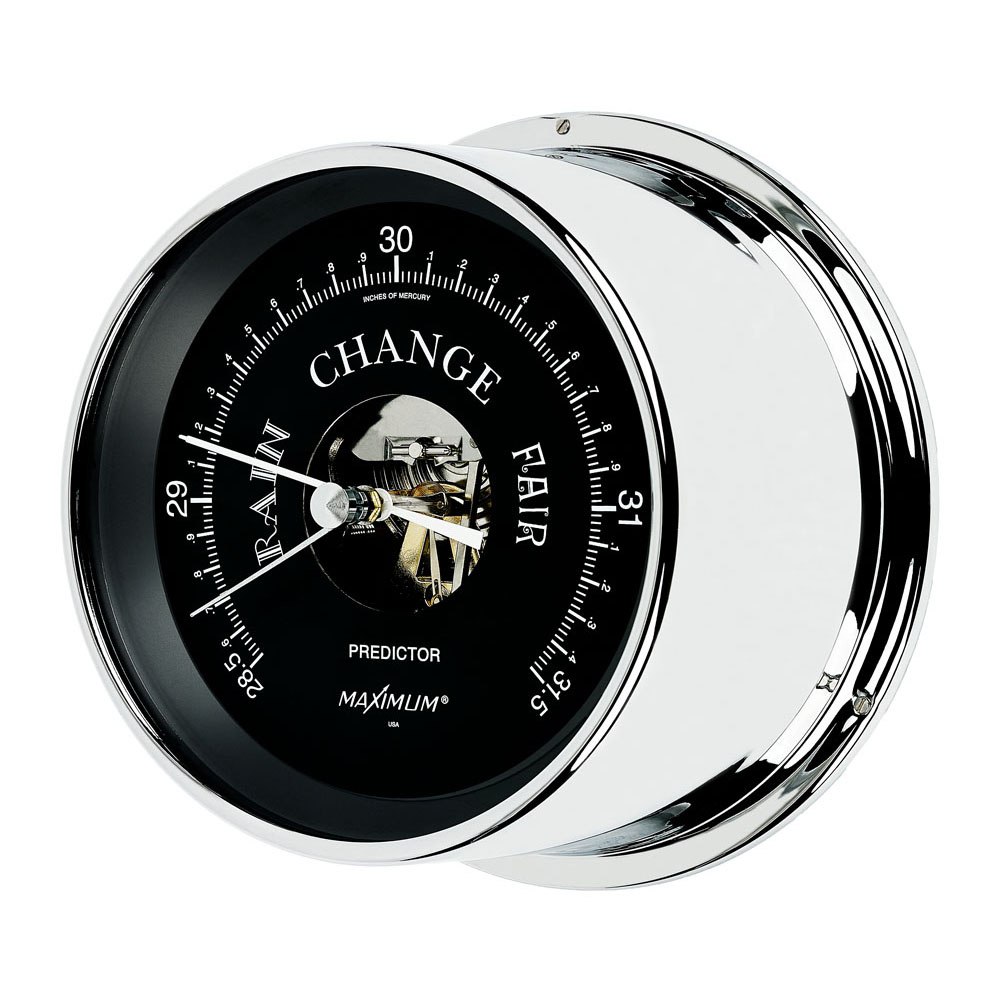


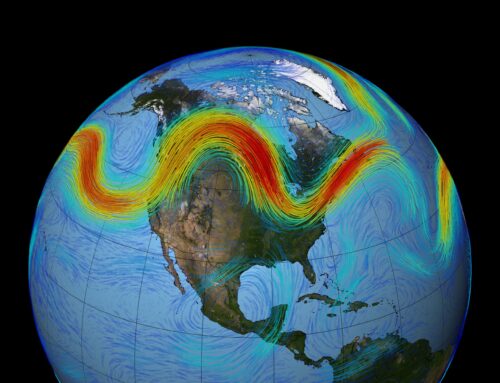
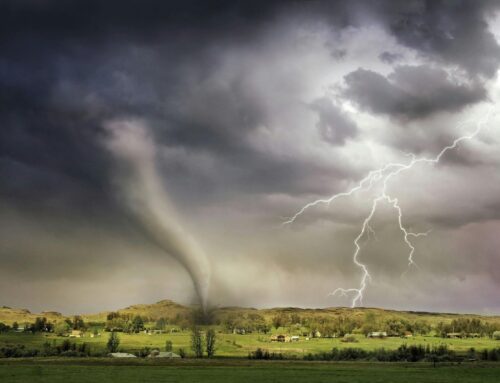
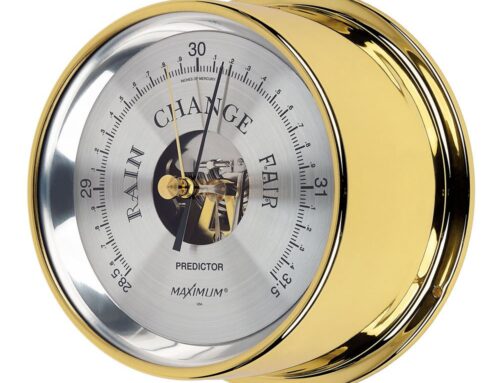
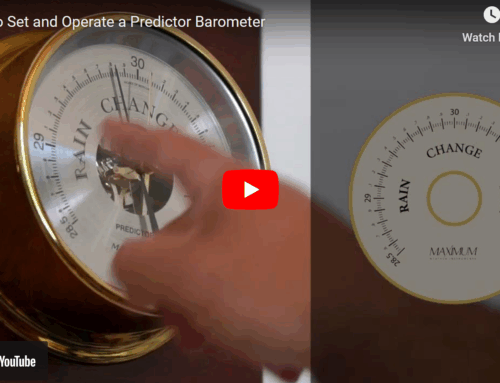




Does atmospheric pressure go up and down because of the depth of the air column? What makes it change?
As air cools, it contracts, molecules come closer together, making it denser (weigh more per cubic measurement) and thus exert more pressure down on the earth surface = high pressure.
I have been a follower of Barometric pressure ever since the age of about 10 yrs old. I tend to read my three barometers every hour more if the clouds appear to be moving in different directions. I have always liked to track weather. I currently live in PA 18951. I would normally expect a current reading of 30.00 to be extremely fair conditions. But if falling 5 points per hour down to 29.1 as it did today 3/30/2023. I would be on the look out for thunderstorms but not always the case. It is just heavy continuously raining.
I love storms during Cold Core storms like Sandy can produce extremely bad weather. Sandy took my weather instruments never to be found even though they survived severe thunder storms. Even in Germany 1967 and Vietnam 1968 to1970 I was able to tell of changing conditions with my headaches.
I’ve been interested in atmospheric pressure since I began reading about hurricanes during the 2004 season. I have to say, I’m annoyed that inHg somehow persists as the default unit of barometric pressure in the U.S. Many younger people, including myself, are more familiar with millibars, or hectopascals. News reports favor millibars when reporting on tropical cyclones and severe weather. It’s ridiculous that inHg seems to be favored by many websites and local news stations.
Very useful information. Always have migraines with change in barometric change. Walking weather predictor. Thanks for sharing.
Modern car engine management systems use a MAP sensor. An acronym, it measures ‘manifold absolute ressure’ meaning it takes into account the atmospheric pressure and the mostly negative pressure the engine creates as it draws in air to burn the fuel.
A remarkably sensitive part, a MAP sensor can usefully measure changes as little as .001% of one Bar.
And yet the large car makers pay just over $2 per sensor.
Such fine sensitivity is required to determine the precise quantity of fuel to inject to satisfy the catalytic converter in order to do its work.
We really do live in extraordinary times.
I too have been an obsessive barometer watcher since 1970!
I was diagnosed with fibromyalgia (now designated ME/CFS AND GETS SOME ACTUAL CDC+ funding). That was 20 years ago. I’m now 75. Don’t ask a doctor, but my symptoms are better or worse in direct proportion to the ups and downs of barometric pressure. Maybe with equipment better than my century- old device—yes! It has the eponymous environmental hazard on board—you can see a forecast. For us with ME/CFS, the weather news is sufficient evidence to educate naysayers (“You’re not sick, you’re crazy” or similar).
Sadly, if you ask “how up is up, how down is down,” my honest answer is, “a f*ck load more than the mercury. One summer afternoon and 60035, I literally left from my chair. My colleague said arek if I were OK. Without missing a beat, I told him to get in his car, there was a tornado coming. (He was tasked with carpool later that day.). I’ve lived in. 60035 half of my life. Because of the shape and height of the brae on that part of the Lake Michigan shoreline, I don’t recall more than a handful of warnings. That day, the funnel came to call but never touched down. In a different part of the city, my son watched the spiral roll past his picture window. My colleagues kid was safe and sound, and I had such a headache.
I have a spinal cord injury at c5, a severed nerve. This paralyzed my left arm. I live at sea level in the PNW Wa. Rising air pressure causes extreme stabbing in my elbow . I used to live in the desert of S. Idaho at 3000 feet elevation and changing air pressure caused migraines.